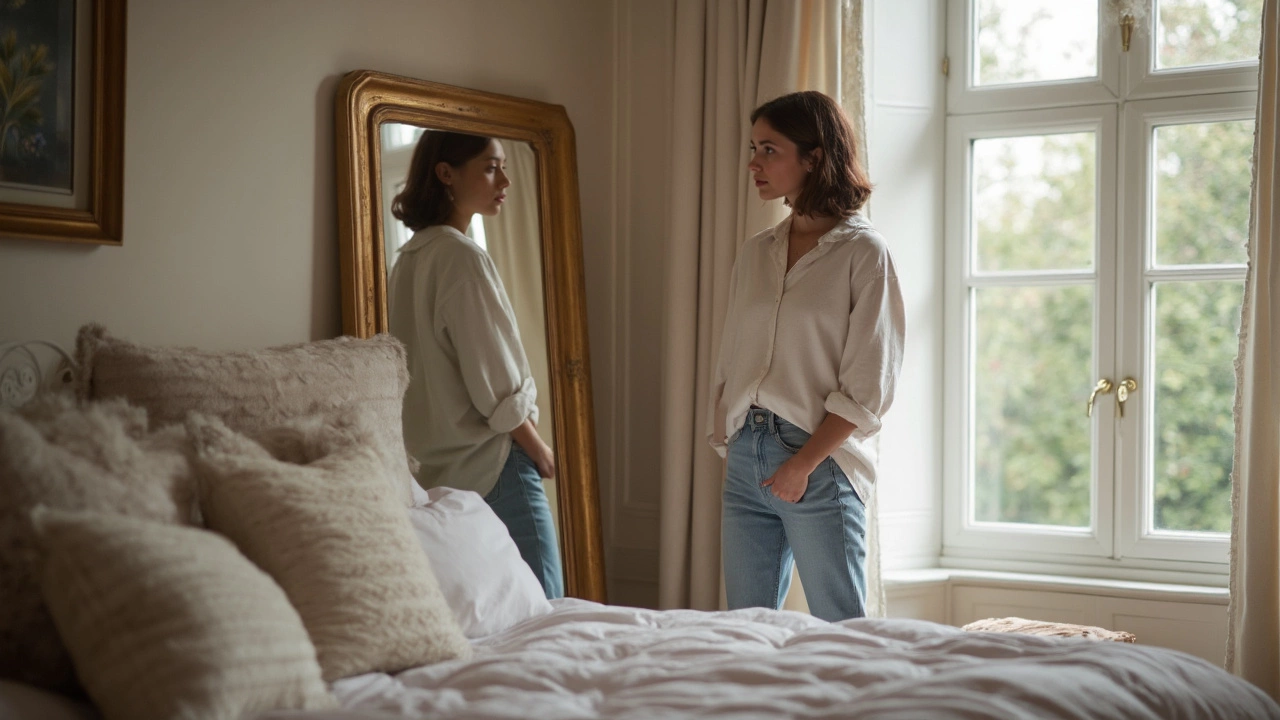Body Perception: How Mirrors Shape Your Self‑Image
Every time you glance at a mirror, you’re getting more than just a reflection. Your brain ties that image to how you feel about yourself. Some people love checking the glass, while others feel a knot in their stomach. The reason behind these reactions is simple: mirrors feed your brain the visual data it uses to build a picture of your body.
Why Mirrors Influence How We Feel
When you see your reflection, the visual cortex lights up and sends signals to the part of the brain that handles emotions. If the image matches what you expect, you get a quick confidence boost. If it clashes with your expectations, you might feel awkward or even anxious. That’s why mirror phobia (eisoptrophobia) can turn a quick glance into a panic.
Culture also adds a layer. TV shows, Instagram filters, and even old folklore paint mirrors as tools for judgment. The “black mirror” idea, for example, taps into a deep‑rooted fear of seeing something dark inside yourself. Those stories make the glass feel like a test rather than a neutral surface.
Age matters too. Kids and teens often check mirrors more because they’re still forming a sense of who they are. Dancers, athletes, and people with body‑focused jobs develop healthy mirror habits – they use the glass to improve technique, not to criticize their looks.
Tips to Keep a Healthy Body Perception
1. Limit mirror time. Set a timer if you catch yourself staring for too long. A quick check in the morning and before bed is usually enough.
2. Focus on function, not just looks. When you look at your body, ask what it can do – lift, run, hug – instead of “Do I look good?” This shifts the brain from judgment to appreciation.
3. Change the angle. A flat mirror shows a true image, but a slightly angled one can soften harsh lines. Play with placement to find a view that feels neutral.
4. Turn off the inner critic. When a negative thought pops up, replace it with a fact: “My shoulders are strong,” or “My smile is genuine.” Repeating facts trains the brain to notice the positives.
5. Use other cues. Light, posture, and how clothes fit give clues about your body without the mirror’s pressure. Try a short walk in a well‑lit room to feel your shape.
6. Talk about it. If you notice recurring anxiety, chat with a friend or a therapist. Naming the feeling often reduces its power.
Mirrors are useful tools, but they shouldn’t run the show. By understanding why they affect you and adding a few simple habits, you can keep your body perception balanced and positive.
Remember, the goal isn’t to avoid mirrors forever. It’s to use them in a way that supports a healthy self‑image. Next time you step up to the glass, ask yourself what you need from that moment – a quick check, a confidence boost, or just a reminder that you’re more than a reflection.
Ever wondered if your full-length mirror is messing with how you see yourself? This article explains if and how full-length mirrors can make you look thinner. You'll learn about the science behind mirror reflections, the role of angles, and why two mirrors never seem to show you the same person. With some practical tips and real-world examples, we make sense of what you see in the glass versus what’s real.
May, 5 2025
